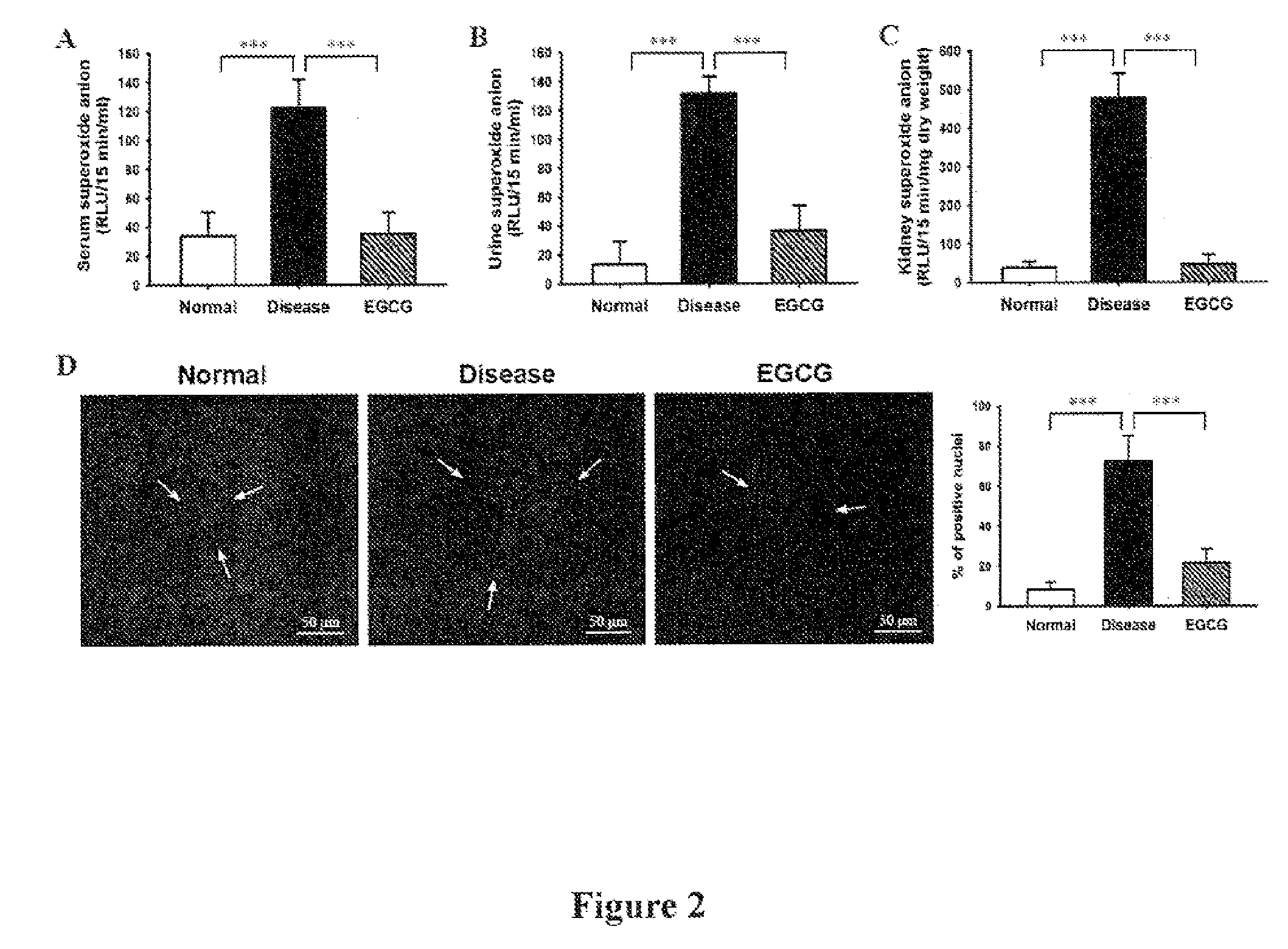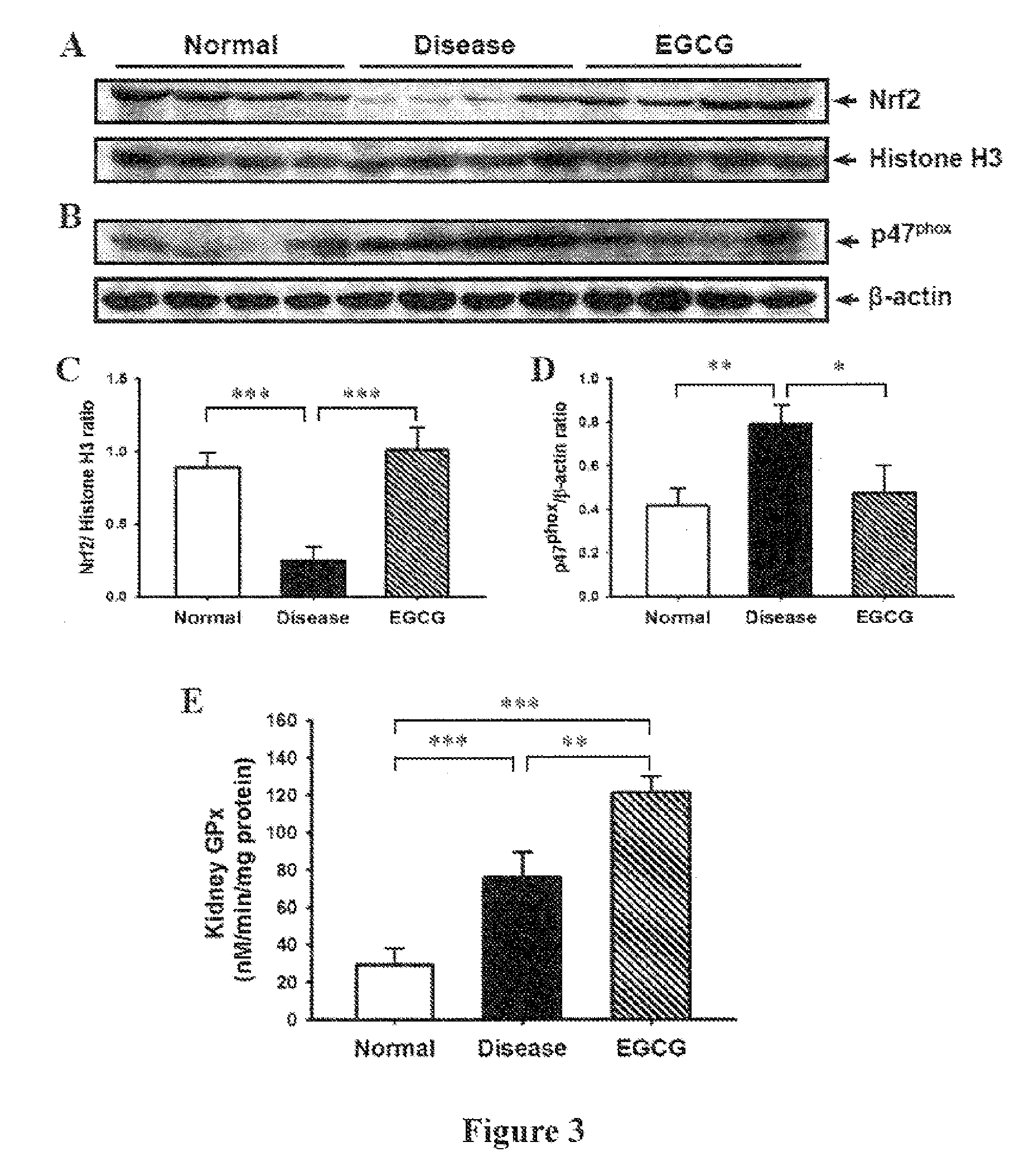Use of epigallocatechin-3-gallate for immune regulation
a technology of epigallocatechin and epigallocatechin, which is applied in the direction of immunological disorders, drug compositions, biocides, etc., can solve the problems that no prior art reference dislcosed the use of egcg in immune regulation, and achieve the effects of preventing or treating systemic lupus erythematosus, preventing or treating local lupus erythematosus, and preventing the development of lupus
- Summary
- Abstract
- Description
- Claims
- Application Information
AI Technical Summary
Benefits of technology
Problems solved by technology
Method used
Image
Examples
example
Materials and Methods
[0036]Animal Model and Experimental Protocol
[0037]Female NZB / W F1 mice were purchased from the Animal Center of the National Taiwan University (Taipei, Taiwan, ROC) and, at 12 weeks of age, were divided into two groups, one of which was given normal saline and served as the disease control, while the other was given 120 mg / kg body weight of EGCG (Ryss Lab, Inc., CA, USA) (this dose is a slight modification of those used in previous in vivo studies) by gavage daily till sacrificed at 34-weeks-old. 8-Week-old NZB / W F1 female mice (prior to onset of autoantibody production) were used as normal controls. Urine samples were collected in metabolic cages every 2 weeks and urine protein levels were measured, and serum samples were used to measure serum levels of blood urea nitrogen (BUN) and creatinine (Cr) as described previously (Ka, S. M. et al. Decoy receptor 3 ameliorates an autoimmune crescentic glomerulonephritis model in mice. J Am Soc Nephrol 18:2473-2485; 2007...
PUM
| Property | Measurement | Unit |
|---|---|---|
| antioxidant activity | aaaaa | aaaaa |
| real time PCR | aaaaa | aaaaa |
| antioxidant | aaaaa | aaaaa |
Abstract
Description
Claims
Application Information
 Login to View More
Login to View More - R&D
- Intellectual Property
- Life Sciences
- Materials
- Tech Scout
- Unparalleled Data Quality
- Higher Quality Content
- 60% Fewer Hallucinations
Browse by: Latest US Patents, China's latest patents, Technical Efficacy Thesaurus, Application Domain, Technology Topic, Popular Technical Reports.
© 2025 PatSnap. All rights reserved.Legal|Privacy policy|Modern Slavery Act Transparency Statement|Sitemap|About US| Contact US: help@patsnap.com



